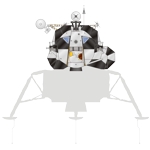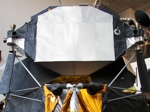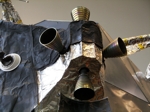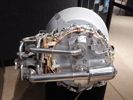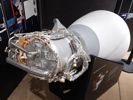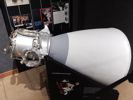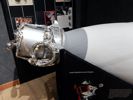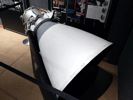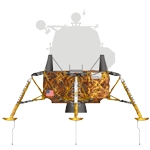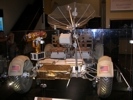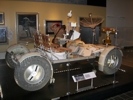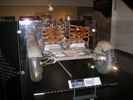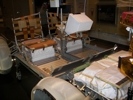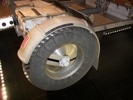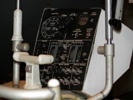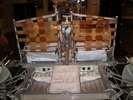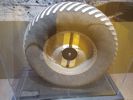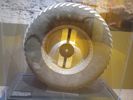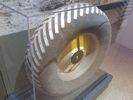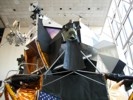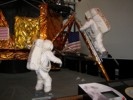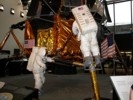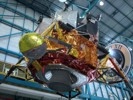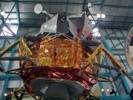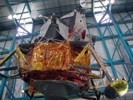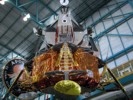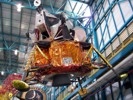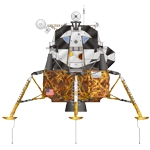
Apollo Lunar Module
Lunar Module
The Apollo Lunar Module (LM) was designed to transport two astronauts from Lunar orbit to the lunar surface and back again. Developed by Grumman, the LM had two stages. The lower component was known as the descent stage and the upper part was the ascent stage.
The first unmanned test flight of a Lunar Module occurred with the Apollo 5 (AS-204) mission. Launched on 22 January 1968, the mission was a success. Apollo 9 was the first mission to test the LM in Earth orbit with a crew onboard. The first test in Lunar orbit occurred with the Apollo 10 mission.
Apollo 11, launched on 16 July 1969, would be the first landing mission. LM-5, piloted by Neil Armstrong and Edwin Aldrin, landed successfully on the Lunar surface on 20 July 1969.
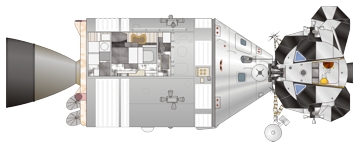
Apollo J-Class CSM and LM Ascent Stage
Improved Lunar modules, known as 'H' series models, were flown on Apollo 12, 13 and 14. These LMs could spend two days on the Lunar surface.
Later versions of the Lunar module, used on Apollo 15, 16 and 17, featured even more improvements. Known as 'J' series lunar modules, these spacecraft could stay on the surface for three days. The advanced landers also included room for a Lunar Roving Vehicle.
| Serial Number | Mission | Name | Launch Date | Mission |
| LM-1 | Apollo 5 | --- | 22JAN1968 | Unmanned test in Earth orbit. |
| LM-2 | --- | --- | --- | Not Flown. Currently on display at the National Air and Space Museum. (Photos) |
| LM-3 | Apollo 9 | Spider | 3MAR1969 | Lunar module tested in Earth Orbit. |
| LM-4 | Apollo 10 | Snoopy | 18MAY1969 | Lunar module tested in Lunar Orbit. |
| LM-5 | Apollo 11 | Eagle | 16JUL1969 | Lunar landing at Mare Tranquillitatis. |
| LM-6 | Apollo 12 | Intrepid | 14NOV1969 | Lunar landing at Oceanus Procellarum. |
| LM-7 | Apollo 13 | Aquarius | 11APR1970 | Landing aborted. |
| LM-8 | Apollo 14 | Antares | 31JAN1971 | Lunar landing at Fra Mauro. |
| LM-9 | --- | --- | --- | Not Flown. Currently on display at Kennedy Space Center. (Photos) |
| LM-10 | Apollo 15 | Falcon | 26JUL1971 | Lunar landing at Hadley-Apennines. |
| LM-11 | Apollo 16 | Orion | 16APR1972 | Lunar landing at Descartes. |
| LM-12 | Apollo 17 | Challenger | 7DEC1972 | Lunar landing at Taurus-Littrow. |
| LM-13 | --- | --- | --- | Not used. |
| LM-14 | --- | --- | --- | Not used. |
| LM-15 | --- | --- | --- | Not used. |


